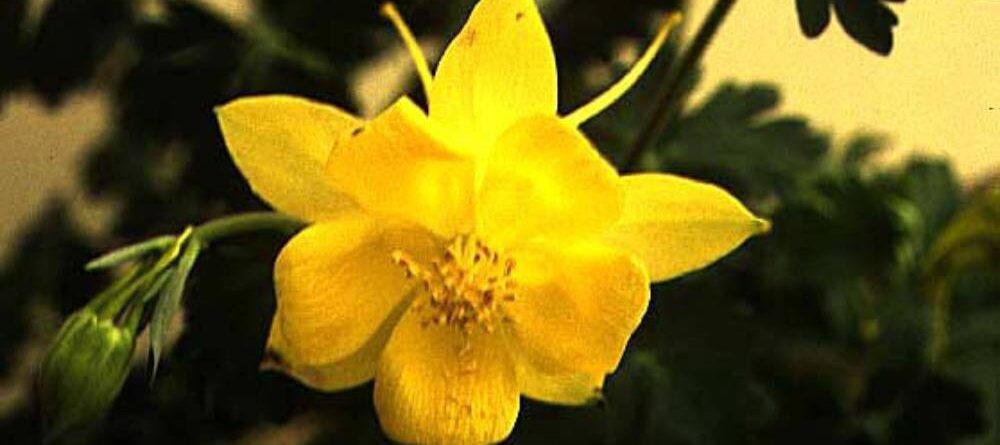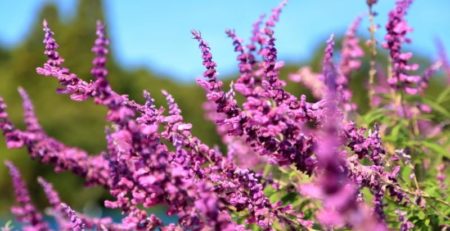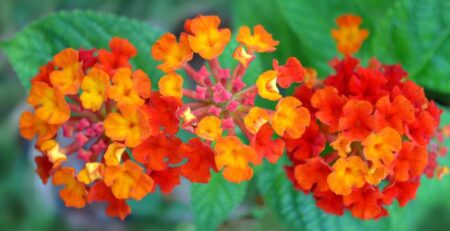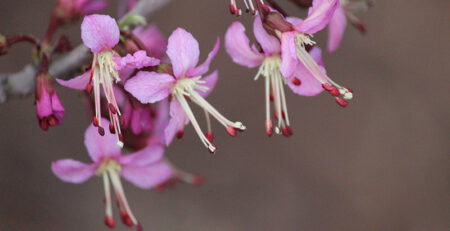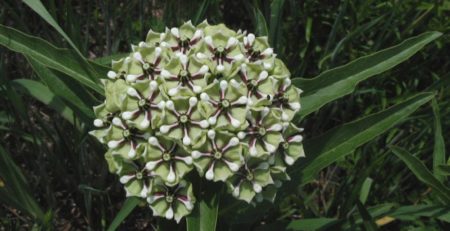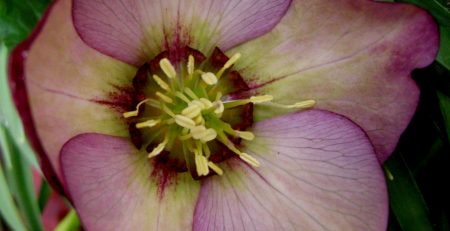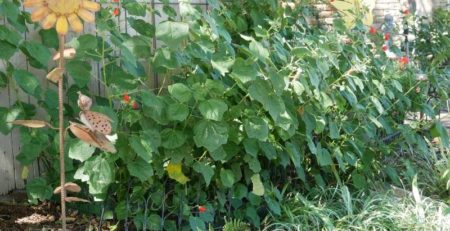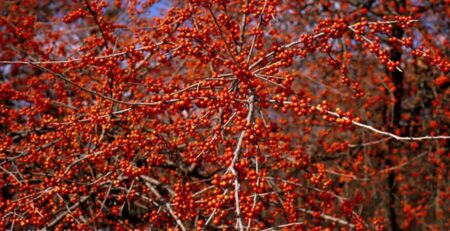Aquilegia chrysantha hinckleyana ‘Texas Gold’

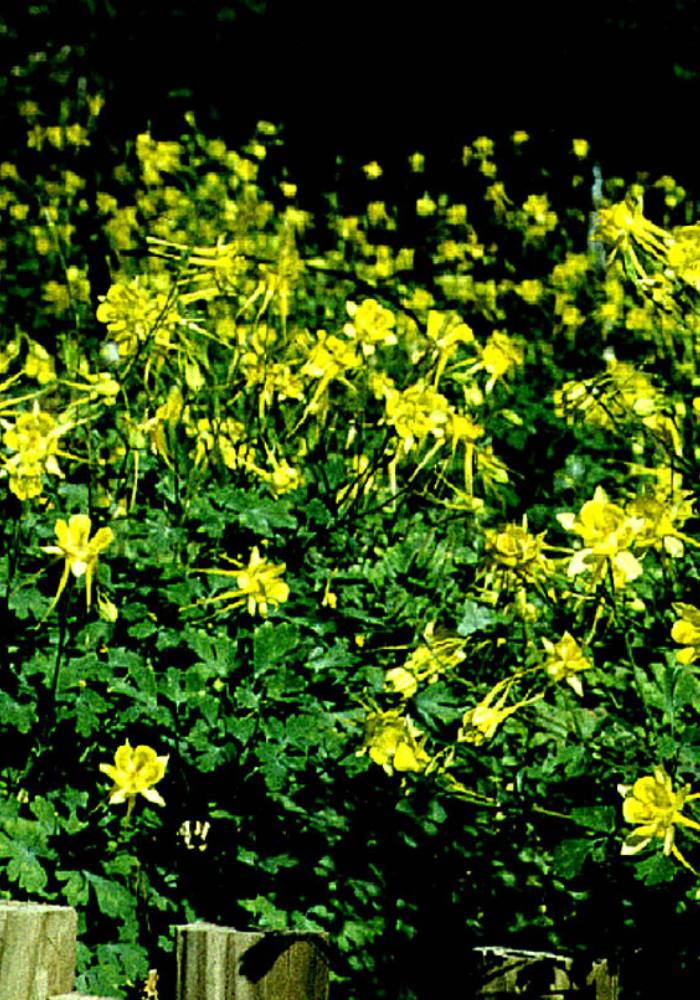
Botanical Name: Aquilegia chrysantha hinckleyana ‘Texas Gold’
Common Name: Texas Gold Columbine, Yellow Columbine, Hinckley’s Golden Columbine, Gold Spur Columbine, Hinckley Columbine
Synonyms: Aquilegia hinckleyana
Category: Perennial
Family: Ranunculaceae
Lifecycle: Perennial
Lifecycle (Alt):
USDA Symbol: AQCHH
Hardiness Zone North: 4A
Hardiness Zone South: 9B
Sun Requirement: Partial Shade (2-4 hours of sun per day)
Sun Requirement (Alt): High Shade 1-2 hours of sun per day)
Water Requirement: Medium
Growth Rate: Moderate
Maintenance: Low
Plant Adult Height: 1-3 ft
Plant Adult Spread: 1-2 ft
Plant Spacing: 12-18 in.
Soil Preference: Adaptable
Soil pH Preference: Adaptable
Propagation: Division, Seed
Attracts: Bees, Birds, Butterflies, Hummingbirds, Moths
Resists: Rabbie, Deer, Disease
Tolerates: Freeze, Drought, Clay Soil, Heavy Shade, Dry Soil, Heat
Miscellaneous: Poisonous to Humans, Toxic to Pets & Animals, Tolerates Poor Soil, Wildflower, Native Plant, Monoecious
Description: The distinctive Texas Gold Columbine, more formally known as Aquilegia chrysantha hinckleyana ‘Texas Gold’, is an entrancing, perennial herbaceous plant that radiates with vibrant, golden-yellow flowers. Revered for its unique, elegant form, the Texas Gold Columbine exhibits long-spurred blooms which dangle enticingly from slender, arching stems, lending an ethereal beauty to any garden setting. Often in bloom from late spring to early summer, its striking flowers present a delightful visual spectacle, drawing attention from both humans and beneficial pollinators. The nectar-rich flowers, in particular, are a favorite of hummingbirds, while also attracting an array of butterflies and bees, making it a perfect addition to a pollinator garden. Moreover, the Texas Gold Columbine has adapted to be relatively deer resistant, proving its resilience in the face of garden pests. Its generally unfussy nature is supplemented by its tolerance to a variety of soil types, from well-draining clay to loamy and sandy soils, with a preference for slightly alkaline conditions. The plant’s origins can be traced to the limestone hills of the Big-Bend area of Texas, and though not invasive, it has a propensity to self-seed under optimum conditions. However, gardeners should note that all parts of Texas Gold Columbine could be potentially toxic if ingested. In terms of care, it thrives in part sun to light shade and appreciates regular watering, but it’s also drought-tolerant once established, making it simultaneously captivating and worry-free for a home gardener. Pleasing not just as standalone specimen plants, Texas Gold Columbines also serve as excellent cornerstones in cottage gardens, woodland gardens, or as border frontage, where their delightful, nodding blossoms can be showcased effectively.
Propagation & Planting: Propagating and planting the Texas Gold Columbine is a rewarding process. To begin propagation, you have two options: seeds or basal cuttings. Starting from seeds, which are typically available commercially, you can plant those directly into your garden soil in late summer to early fall. With proper watering, you should expect germination in spring. If you want to create clones of your existing plant, you can opt for basal cuttings in spring. Cut a 2-4″ piece of the plant, making sure to include a few leaf nodes, then pot it in a quality potting soil. Regardless of propagation method, the planting method is the same. Choose a site with full sun to partial shade and soil with good drainage. Plant the Texas Gold Columbine with a distance of 1-1.5 feet between each plant. Keep the soil consistently moist but not wet – overwatering can lead to root rot. Texas Gold Columbines are typically not used extensively in residential gardening or as a houseplant due, in part, to their preference for an outside environment. After planting, apply a balanced slow-release fertilizer to promote healthy growth. Regular trimming helps to maintain blooming and control the size of the plant. For perennial growth, allow a few of the plants to produce and drop their seeds.
Plant Care: The Texas Gold Columbine requires well-drained, moderately acidic to neutral soil and thrives in low light to partial sun exposure which is particularly recommended during hot summer months to protect the plant from intense heat. Watering should be sufficient to keep the soil moist but not waterlogged, and consideration for increased irrigation is needed during dry spells. Mulching around the Columbine will help retain soil moisture, mitigate temperature fluctuations, and minimize weed competition. Feed your plant with a balanced slow-release fertilizer in late spring, when the period of growth is vigorous, and prune after flowering has ended, removing spent blooms to encourage re-flowering, and promoting a bushier growth with heavier blooms for next season. In autumn, further pruning may be performed, cutting back thoroughly to stimulate healthy, robust growth in the upcoming spring. During winter, ensuring a layer of mulch shields the Columbine’s roots from severe cold is recommended. Be cautious of the plant’s susceptibility to leaf miners and powdery mildew. Use of an organic or chemical fungicide for the mildew, and removing any infested leaves at the first sight, will keep your Columbine plant healthy. It should be noted, Texas Gold Columbine is seldom used as a houseplant.
Fertilize: While generally not required, the Texas Gold Columbine appreciates a well-balanced fertilizer, ideally with an NPK value close to 10-10-10, applied once yearly in early spring before new growth begins to ensure optimal nutrition. Please ensure that the fertilizer is thoroughly watered into the soil to prevent leaf burning. If you prefer organic options, well-rotted compost or manure can be used instead, but ensure these materials are aged and not fresh, as fresh compost or manure can cause harm. It should be noted that this plant is not commonly used in typical residential gardening or landscaping as it normally prefers woodland or naturalistic type of gardens. As a rule of thumb, excess fertilization is more detrimental than under-fertilization, so apply with care, respecting the plant’s moderate fertility needs.
Prune: The Texas Gold Columbine should undergo its initial pruning in late winter or early spring before new growth commences, to remove any dead or damaged foliage from the previous growing season. Lightly trim the plant, using bypass pruners for precise cuts, ensuring not to cut into the central crown of the plant or remove more than a third of the plant’s mass to maintain plant health. Another round of pruning can take place after flowering in the summer to encourage a second bloom later in the season; cut back the stems of spent flowers to the next bud or leaf, but leave some flowers if you want the plant to self-seed. Avoid pruning in the fall, as the plant needs to retain its foliage to store enough energy for winter dormancy. Always ensure pruners are clean and sharp to minimize damage and disease transmission. Remember that the Texas Gold Columbine is not a typical houseplant or residential garden plant, thus necessitating specialized care and attention.
Pest & Disease: The Texas Gold Columbine is prone to a few pests and diseases commonly found in residential gardening. Aphids, spider mites, and leaf miners may infest the foliage of this plant and should be quickly controlled with an insecticidal soap or neem oil spray. Keep an eye out for signs of damage such as leaf curling, discoloration, and small holes on the foliage. Diseases include leaf spot and powdery mildew. Leaf spot presents as brown or black spots on leaves, with serious cases leading to leaf drop. Fungicides can manage leaf spot, though a better strategy might be preventative measures, such as regularly pruning and ensuring proper air circulation around the plant. Powdery mildew results in a white, dusty coating on leaves and is usually due to high humidity or overwatering. This can be treated with a fungicide, but prevention via regular watering and moisture monitoring is key. Given that it is a less common flower specimen for residential gardens, be aware of these potential pests and diseases to ensure your Texas Gold Columbine maintains optimal health.
PlantTAGG® is the most technically advanced mobile solution for helping gardeners learn about and care for their plants. PlantTAGG’s goal to educate gardeners blends seamlessly with the mission of the Master Gardener program to provide research-based horticultural information to the residents of Dallas County and beyond. To set up your own yard, download the PlantTAGG app.

